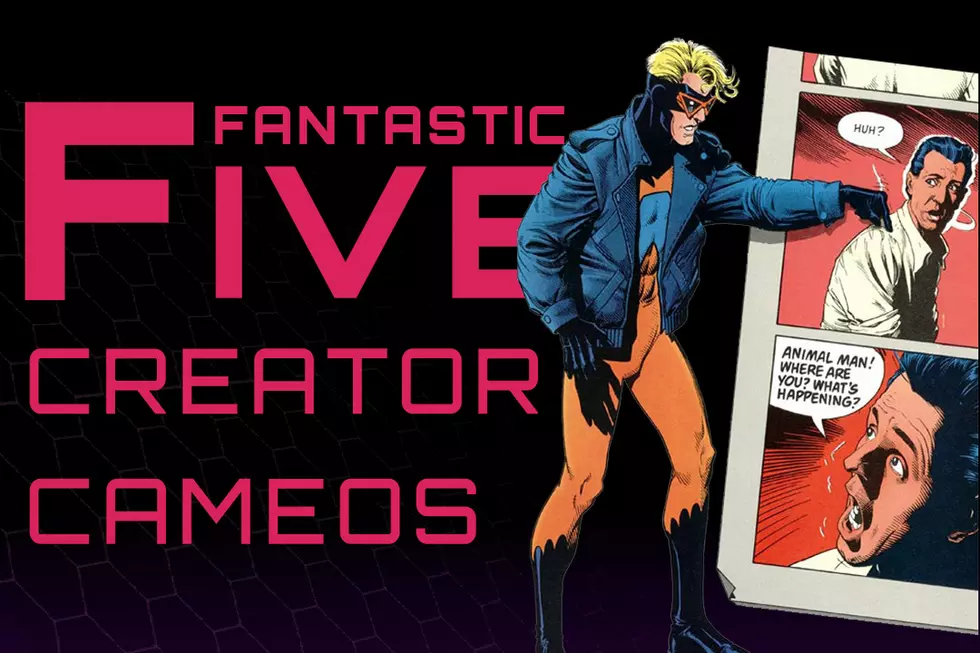
The Last Good Boy: Celebrating Jack Kirby’s ‘Kamandi’
In the early 1970s, DC Comics attempted to gain the rights to publish comics based on the popular Planet of the Apes franchise. When that effort failed, editor Carmine Infantino asked Jack Kirby to create a comic with similar themes and visuals. Kirby hadn't seen the movies, but he got the gist --- post-apocalyptic, talking animals, animalistic humans, the Statue of Liberty in disrepair. So on August 29 1972, the day after Kirby's 55th birthday, Kamandi: The Last Boy on Earth #1 was published.
While it's not as legendary now as his Fourth World titles, Kamandi was Kirby's longest-running DC book. He wrote and drew it for 37 issues, then drew it for two more with Gerry Conway scripting, and then the book lasted until issue #59, when it ended as part of the DC Implosion of 1978.
Ever since then, the character and his world have been a part of the DC Universe. Crisis on Infinite Earths tried to erase his chapter of the future, but it never stuck, and he's since turned up in projects as far afield as Wednesday Comics, Batman: The Brave and the Bold, and the revival of DC Challenge.
Kamandi was a teenager raised by his grandfather in a bunker as the apocalypse raged outside. He emerged after his grandfather's death to find a world unlike any previously imagined, wilder to be sure than anything in Planet of the Apes.
On this future Earth, it was not just one species that had gained sentience and taken over from humanity --- it was basically all of them. Bipedal tigers in regal clothing did battle with equally impressive leopards, while dogs acted as laborers and scientists, and humanoid rats took over the partially sunken husk of New York City --- a prospect that no doubt seemed entirely plausible in 1978.
And into this world came Kamandi, a heroic and handsome blond-haired boy in jean shorts. He's called "The Last Boy on Earth," and what that subtitle means is an interesting question. He's not the last male human; there are actually plenty of humans, but they're speechless and feral. He's not the last young male of a sentient and civilized society either. There's no shortage of dog boys and tiger boys that fit that description. By the end of the first issue, Kamandi had even met Ben Boxer, a heroic young man who appeared to be just as human as he is, although he turned out to be something a bit different.
But what makes Kamandi unique in this world --- what Kirby really means when he labelled him the Last Boy on Earth --- is that Kamandi, to borrow a phrase, is the last of us. He's not technically the last human, but he's the last human who looks at the world he's awakened into and sees it as bizarre and wrong. Even if his knowledge comes only from history books pored over in an underground bunker, he expects the world to look like ours, and reacts with the same surprise we would to what it's become.
In short, he's the point of view character that gives the reader access to a strange world of tiger-kings, dog-scientists, and nuclear robot-men. And that's what makes the premise work so well, and what gives Kirby's creation such staying power.
More From ComicsAlliance


![Kamandi Skips The Con, But Still Has A Weird Time In San Diego In ‘The Kamandi Challenge’ #3 [Exclusive]](http://townsquare.media/site/622/files/2017/03/Kamandi00.jpg?w=980&q=75)


![Super7 ReAnimates Alien and Predator, Masters More of the Universe [Toy Fair 2017]](http://townsquare.media/site/622/files/2017/02/IMG_2000.jpg?w=980&q=75)


![The Wild, Tear-Filled World of Heartbreak: The Best Romance Comic Covers Ever [Love & Sex Week]](http://townsquare.media/site/622/files/2017/02/featured1.png?w=980&q=75)
